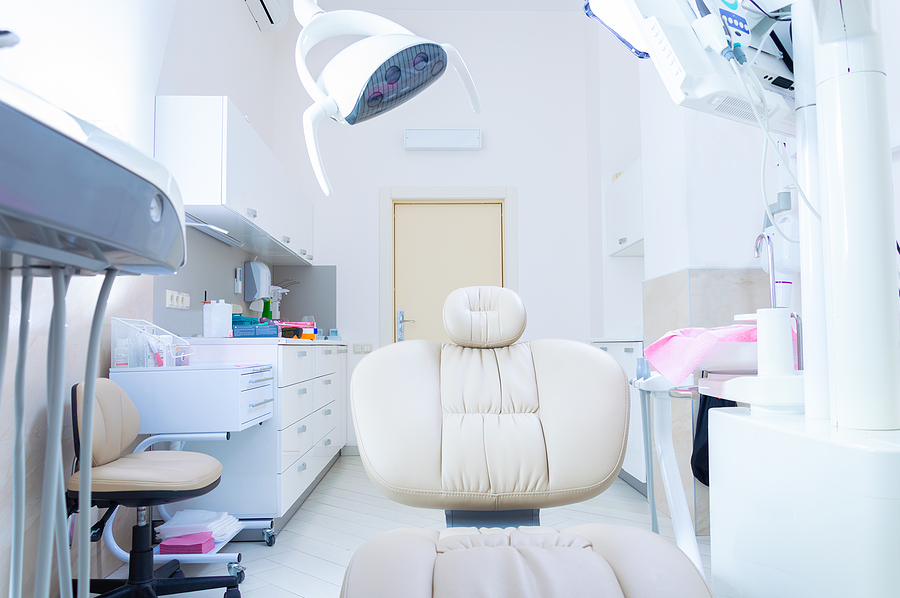At present, professionals who are especially working in a highly sophisticated environment and handle the latest gadgets, suffer from work-related musculoskeletal disorders. In the healthcare sector, dental professionals who fail to follow good working ergonomics face health issues.
Dentists must work in an environment with sufficient lighting and follow good posture during clinical procedures. Prolonged awkward postures, pushing or pulling, and prolonged exertion of hands induce musculoskeletal disorders in dentists.
According to a research study, 29.5% of dentists retire early due to musculoskeletal disorders, 21.2% due to cardiovascular disease, 16.5% due to neurotic symptoms, 7.6% due to tumors, and 7.6% due to diseases of the nervous system. Most dentists retire early because of repetitive injuries that lead to musculoskeletal disorders. Here are some important ergonomics procedures that dentists need to follow.
Following proper ergonomics
Every day, dentists as healthcare professionals face the risk of musculoskeletal disorders. Repetitive motion injuries, shoulder pain, and muscle fatigue can be prevented by following proper ergonomics. While at work, dentists must sit straight with shoulders relaxed and elbows at their sides. Avoid bending, twisting spines, and hunching over while examining or during dental procedures.
Improved ergonomics while practicing dentistry must strike a balance between offering efficient treatment and maintaining good health. Ergonomics procedures help dentists in maintaining good posture, offering efficient treatment, and being patient-friendly.
Remember to lift the chair high enough, stand comfortably with the back straight, and keep the spine in a neutral position. By following proper ergonomics, repetitive strains can be minimized to a greater extent. Using dentist saddle chairs or stools help to sit straight during clinical procedures.
Using saddle chairs or stools improves diaphragmatic breathing. It helps to move closely around the patient and minimize backrest support. Neutral spine posture aids in keeping the head in the correct posture and moving the shoulder properly. Never tilt forward the seat of the saddle stool because it may induce lower back pain.
Taking care of your health
Being in healthcare, dentists give their utmost care during clinical procedures. It will be their priority to help patients be free from pain and discomfort. Knowingly or unknowingly, dental professionals stretch their necks or lean over to have a better look. Working in an awkward position repeatedly induces back pain or leads to carpal tunnel syndrome. So, it becomes crucial for dental professionals to take care of their health. Unless free from pain, they may not provide medical help to their patients to be free from pain.
Maintaining proper posture
Ergonomics starts with good posture so that it is easy to maintain a neutral position of the body during clinical procedures.
- Avoid leaning or bending over your patient.
- Sit during lengthy clinical procedures.
- Work closely with patients to avoid overextension of arms.
- Use a footrest or keep your feet flat on the floor.
- Use a loupe to look at the intraoral cavity.
- Work with wrists in a neutral position.
- Grip instruments firmly and not tightly.
- Use mirrors to view the oral cavity.
- Use lightweight head-mounted light to minimize shadows.
Avoiding awkward postures
Lowering, handling, or lifting objects places more stress on the spinal discs. Repeated twisting or bending of wrists, hips, knees, or shoulders may stress joints. Similarly, working in awkward positions to get an optimal view of the patient’s mouth or handling complex equipment, or frequently reaching for instruments during the clinical procedure stress the nerves and muscles and induce more pain.
Choosing proper instruments
Selecting instruments with a larger diameter and weighing light support good ergonomics. An instrument with a textured grip surface can be gripped easily with less force during scaling, probing, and root planing. Properly sharpened tools prevent hand fatigue.
Use a pair of loupes with a built-in headlight to prevent unnecessary hunching or bending. There will be no need to adjust the light. It avoids repetitive movements that create muscle strain. Just by tilting your head in the way you look, you can examine with ease.
Stretching exercises
Regular stretching exercises specific to the neck, shoulders, wrists, eyes, and back helps to relax muscles. Even a simple stretching exercise by pushing the neck back or tilting the chin down or with your eyes looking in a different direction will help to relax.
Doing a simple yoga exercise to tone your abdominal muscles helps you sit straight all day without much stress or strain.
Getting a regular massage
Similar to stretching exercises, getting a regular massage helps to relax the body that gets tensed because of repetitive movements. Massage helps to relieve the tension in the muscles and lessens the risk of musculoskeletal injuries. Regular massage helps dental professionals to be healthy and practice longer.
Treating patients properly
While examining or during clinical procedures, let the patient slide in a sitting position on the dental chair. It will prevent the dentist from leaning over the headrest. While treating, adjust the patient chair so that dentists keep their forearms sloping ten degrees upward or parallel to the floor. Tilt for about 30 degrees from the horizontal plane while treating the lower arch. Tilt to 15 to 20 degrees from the vertical plane while treating the upper arch.
Maintain a flexible appointment schedule to reduce strain and stress. Assign easy and difficult dental procedures alternatively to work at a relaxed pace.
Conclusion
Dentists spend at least 60,000 hours working in awkward positions that may lead to musculoskeletal disorders. Muscle imbalance and stress can be reduced by following good ergonomic procedures and by doing simple exercises regularly.
By working in a healthy workplace, improves performance and minimizes mental and physical stress. Dentists must also know the sequence in which ergonomic procedures can be implemented and need for effective intervention.

